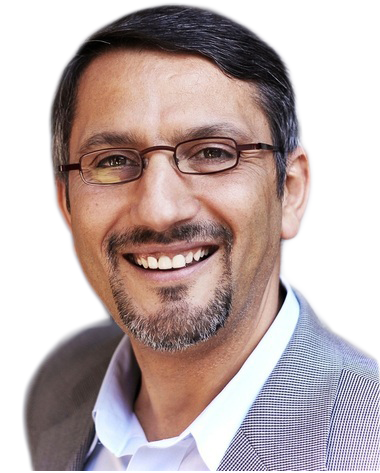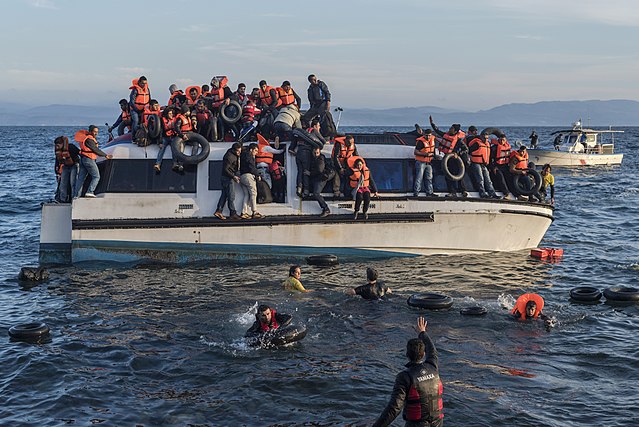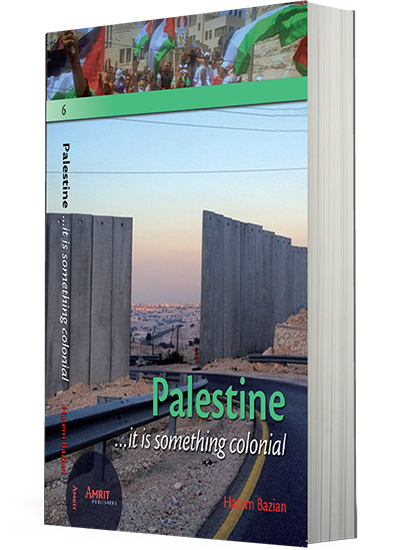Trump’s four pillars immigration reform is centered on bringing an end to an important and humane feature of current US immigration policies, family reunification. The skeleton of the plan was released during the President’s State of the Union Address, but it is still lacking details. The White House “four pillars” of immigration reform include: “a path to citizenship for 1.8 million “Dreamers” and those undocumented immigrants who would otherwise qualify for the Obama-era Deferred Action for Childhood Arrivals program; a $25 billion trust for a wall along the Mexican border; ending the visa lottery in favor of a merit-based immigration system; and limiting family reunification to sponsorships for spouses and minor children only”. The last point in the plan is the most critical one since it seeks to drastically change 50+ years of immigration policies that favored family reunification.
Both Senate and Congressional Republican leaders moved swiftly to adopt Trump’s framing and the use of the offensive and de-humanizing “chain migration” term to reshape the debate on the issue. Here, the de-humanizing framing is intentional and part of a strategy to depersonalize, objectify, and create an imaginary threat and not one of faces of children and family. There is a profound difference between using “chain migration” and “family reunification” when describing immigration policy. “Chain migration” removes the images of children, women, and men arriving in a new land to reunite with loved ones that made it to America despite all the obstacles and hardships. The below quote from America’s Statue of Liberty must be changed to add “Chain Migration” to reflect Trump’s proposed policy:
“Give me your tired, your poor,
Your huddled masses yearning to breathe free,
The wretched refuse of your teeming shore.
Send these, the homeless, tempest-tossed to me,
I lift my lamp beside the golden door!”
Trump’s mean-spirited, anger-filled and White backlash stoking agenda is reprehensible enough but what is indefensible is the proclivity of segments of the evangelical Christian Right and some extreme Zionist Islamophobic figures embracing and advocating this agenda. The coalescing of various groupings in support of this immigration agenda has been a work in progress since at least the passing of the 1965 Immigration Act and the attempt to maintain an unsustainable White majority for the foreseeable future. Certainly, the “Clash of Civilization” and the subsequent “Who Are We” books by Samuel P. Huntington have framed the problem and contributed to stoking the White backlash in the US and I would argue that across Europe as well. This is the same White backlash that MLK spoke about and provided a counter-framing in his 1968 Three Evils of Society famous speech. However, the critical question is why religious groups are supporting this policy and why is it wrong?
Religious texts from the three Abrahamic faiths provide a counter epistemic to Trump’s policy, which is rooted in prophetic narratives and standing on firm theological grounds. Here, the narratives of Abraham, Lut, Joseph, Moses, Jesus, and Mohammad (peace upon them all) are illustrative of immigration and movement from a place of persecution and hostility to a land providing religious freedom, political stability, and economic opportunities. Abraham himself and Lut are both immigrants and political refugees, who had escaped persecution from the family and tribe to arrive in the Land of Cannon (Palestine) to find a welcoming king and hospitable people that then contributed to shaping history as we know it. Here, the migration of Abraham and Lut led to renewal and a new beginning that ushered the Abrahamic prophetic line that we are all still benefiting from.
In the Qur’an, the verse of the Abrahamic migration reads that “I am going to my Lord, Who will guide me”, a clear indication that the destination of the migration is connected to finding, locating, and seeking the guidance of the Divine. A spiritual indication can be deduced – in the act of migration, a spiritual connection and affinity with the Divine are embedded. We may understand this to say “blessed are the immigrants for they are on the path towards the Divine”.
A more illustrative narrative is that of the prophet Joseph, who combines many elements that counter any argument in favor of Trump’s new restrictions, which may be clothed in any type of religious garb. A quick reminder that Joseph was first thrown into the water well by his own brothers in a fit of jealousy, ended being sold into slavery to spend time in servitude, and was falsely accused and spends time in jail. Here, the early part of Joseph’s narrative can for sure translate into parts of the experience of African Americans, who are involuntary immigrants to the new world, being brought as “cargo” in the hulls of ships and continue to face a racist structure that disproportionally sends them to jail for all kinds of offenses including walking and driving while black. Joseph represents all the African American men and women sold into slavery, but yet they continue to be on a steady path toward the Divine, for God was with them throughout the journey and all the way up to the present day.
Joseph rose from slavery and got out of jail to become a minister in the court of the Pharaoh, which would have been a complete story if it stopped at that point. However, the Biblical and Qur’anic narrative provides us a window into the family reunification during Joseph’s era. Joseph’s brothers arrive in Egypt for trade, which concludes with a call for all the family and tribe to immigrate to Egypt. This starts another chapter of the Abrahamic lineage, a period of renewal after arriving into a new land, Egypt. Joseph’s action was rooted in a call for family reunification and not “chain migration” as some would like to frame it in today’s America. Indeed, Joseph’s narrative can be read into the contemporary world with the millions of human beings escaping persecution and hardship across the globe and arriving into safe harbors then making their way up in a new land, then working hard to bring and unite with their families and loved ones from a distant land.
Escape, slavery, immigration, and refugees are all brought into focus in the religious text and a moral and ethical call to attend to the stranger and the needy from all walks of life and backgrounds. The current framing of “chain migration” is the antithesis to the moral and ethical code of the religious text. Opposing Trump’s immigration framing is an obligation for anyone that reads and shares the values encapsulated in the religious texts. “Making America Great Again” subtext actually means keeping America White in a time when homogeneity of any single group is no longer sustainable or desirable.
The future of the world is dependent on cooperation, understanding, and collective efforts to address the multitude of the problems and challenges facing the globe. Immigration and the refugee crisis can’t be solved by building walls and crafting a path towards a White demographic majority, but addressing the real causes of human migration and regional instability is the only way forward.
Let’s be clear that the causes behind the immigration and refugee crisis are a byproduct of wrong and deceptive economic programs rooted in pernicious globalization and a rapid push towards the privatization of the global South. In addition, the massive influx of refugees to Europe, the US, and other parts of the global North are a direct outcome of the interventionist and major powers maneuverings, which resulted in destroying lives and uprooting communities across the global South. Simply put, the immigrants and refugees are heading north because of a never-ending cycle of interventions and war, which are connected to a plan to take control of natural resources, use of cheap labor, and then dominating the markets. Certainly, the trail of immigration and refugees heading north is intertwined with a long history of colonialism, interventions and war, which can’t be dispensed with by formulating a mean-spirited policy that does not address the causes behind the crisis in the first place.
The time is right for an examination of the immigration and refugee crisis from its roots. This examination should be centered on elevating and honoring the dignity of the human beings, regardless of their background or condition. Furthermore, it is time for a call for re-embracing an epistemic of welcoming the stranger into our mix and celebrating a spiritual worldview rooted in the narrative of the Prophets, who lived and provided an example for what it means to pursue Divine purpose in the world. Here, to be religious is to welcome and embrace the immigrants and refugees, while collectively working to solve the problems at the root and not their outer manifestations.


